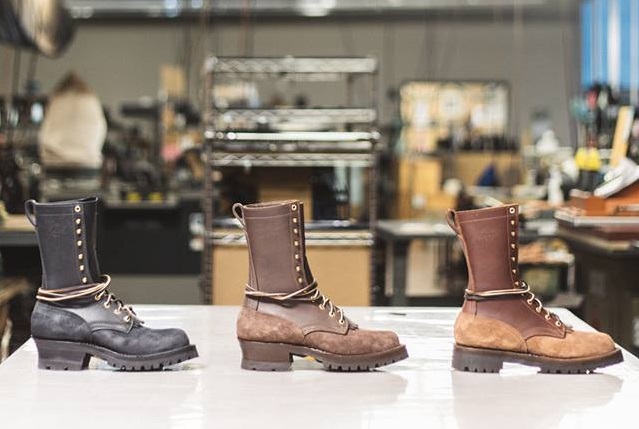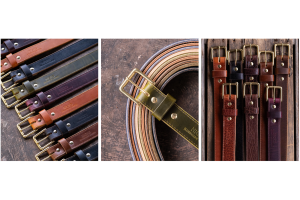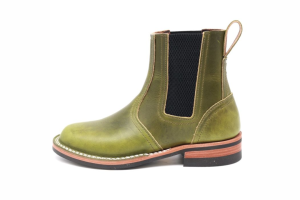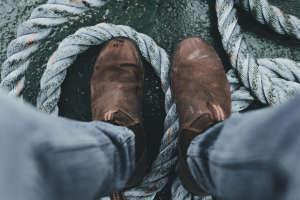How Much Arch Support Do I Need?

One of the most critical aspects of footwear - though there are others - is arch support. Without proper arch support, your feet will not be happy, you will not be happy, and you can even wind up with damage to your feet, ankles, knees and more.
However, what IS proper arch support?
It's actually the right kind of support for YOUR feet. You see, everyone's feet are different. Not everyone needs more support in the arch that is standard in most shoes...but some people do. So it's not so much that everyone needs a certain profile of support, but more than you do because of the nature of your feet.
It's necessary to know your feet well. That way, you can get the appropriate footwear for work - such as a pair of custom work boots - or for backcountry hunting, general outdoor use, or even a pair of casual wear boots or even athletic shoes.
Let's get into that a little more.
What Does The Arch Of The Foot Do?
Before we get into arch support, first you must understand the arch of the foot and what it does.
The arch acts like the shock absorbers of a car. A car has a shock absorber on either side, allowing the car to stabilize over uneven terrain and roll into and out of corners. The suspension compensates for the inertial motion and keeps the occupants relatively stable.
Likewise, the inner and outer foot arch acts as a shock absorber and stabilizer as you walk.
The arch compresses as your heel comes down, absorbing the shock of the impact. As your weight shifts to the ball of the foot and finally the big toe, your weight shifts to the outside arch. At this point, the outside arch stiffens to stabilize the foot as your weight rolls onto the ball and toes, and then the foot lifts off the ground.
This natural side-to-side motion and transfer of weight are called pronation. On perfectly flat ground with no shoes, you should have completely normal pronation. This is why some people have switched to "barefoot" running shoes in recent years, as - well, this is the idea, anyway - a raised heel and thick sole can interfere with pronation while running.
However, what if you have high arches or flat feet?
What happens with flat feet is overpronation, though it can happen to people that don't have flat feet. In this instance, there isn't enough support on the instep to arrest forward motion as the heel impacts the ground. This causes the ankle to roll inward. This strains the toe and ball of the foot, and puts more stress on the tibia (shin bone) causes shin splints and also knee pain.
If your arches are high, this can lead to under-pronation. Also called supination, it interferes with weight transfer during a footstep as the arches don't flatten. This prevents the big toe from doing the work of lifting the foot, putting stress on the outside edge and smaller toes. This increases your risk of tendonitis of the Achilles tendon, plantar fasciitis, an ankle injury, and iliotibial band syndrome. This IBS (not Irritable Bowel Syndrome) is the inflammation of the fibrous tissue that connects the knee to the hip, which causes chronic knee pain on the outside of the knee in many cases.
What Sort Of Arch Support Do I Need?

What sort of arch support do you need? It depends on the arches of your feet.
Ideally, good work boots should be sort of like a good mattress. There should be cushioning, but there should be support too. Additionally, a good pair of work boots must also stabilize your feet; if your ankle rolls easily, that means you do not have adequate stability.
So, in order to find out...you need to get to know your feet, and specifically your arches. Look at the middle of your foot. If there seems to be a little bit of an arch to it, you probably have normal arches. If you have very little, if your foot appears flat, you probably don't have much of an arch; you may have flat feet. And if it looks like your foot is curling even though you're holding it out straight, you have high arches.
Put another way...how do your shoes wear? You lose tread over time, of course, but what pattern does it take? Do your shoe soles wear out evenly? Or do you notice outer or inner tread wears away faster? If your shoes or boots wear on the outside edge, then you are supinating (high arches) as you walk. If they wear on the inside, you're overpronating due to flatter feet.
What should you look for with each?
High arches on feet don't flatten to the outside of the footstep. To correct it, the foot must flatten out more, meaning that neutral (as flat as possible) and flexible footwear is preferred. As the shoe flexes more than the typical model might, the foot does as well, which causes the foot to pronate a little more. Additional cushioning can also help as can custom orthotics and inserts.
For flatter feet, your feet need more rigid footwear designed for motion control or custom orthotics or inserts.
What kind of arch support you'll need for best results depends on a whole lot on your feet. Your foot's shape is going to determine what profile of arch support you'll need to get the best of your work boots.
Custom Work Boots Will Address Your Feet
In order to get the best pair of work boots for your feet, you may wish to invest in a pair of custom work boots. This way, the boot can be tailored for your feet from the ground up, including the installation of additional support in the shank if needs are. This is especially important if some motion control is necessary for you.
Custom inserts can certainly help as well, and a good maker of quality custom leather work boots will be able to provide you with this service.
A good pair of custom work boots, after all, starts with a measuring and a fitting. Doing so will get your feet measured, including tread pattern in how you walk. This way, the bootmaker can tailor a pair of boots - be they leather work boots, hunting boots or even casual boots or quality leather shoes - to your feet.
This will ensure that you and your feet are comfortable, and able to take on any imaginable job without a hitch in your step.




